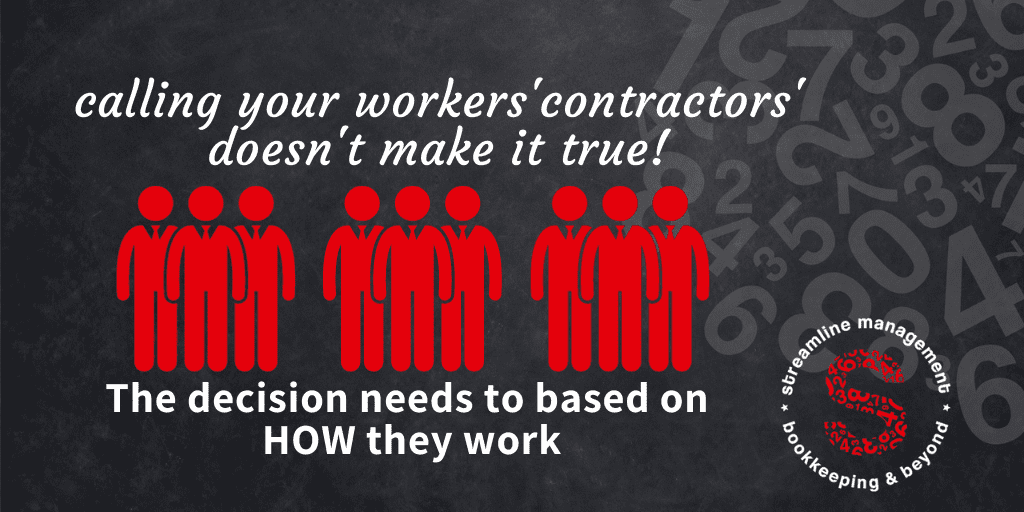Incorrect classification of workers puts your business at risk of receiving harsh penalties, so let’s make sure you know and understand your obligations.
In June 2023, the ATO updated their guidelines, so now is a good time to review.
A few key things to consider when classifying a worker are –
– Super is probably payable for an individual contractor (sole trader) who invoices you for time/labour.
– The 80/20 rule does not apply to your business when you work out whether a worker is an employee or contractor.
– Having an ABN makes no difference to whether a worker is an employee or contractor for a job.
You may find that over time a legitimate contractor could become an employee, so you need to monitor and review new and existing workers.
The penalties for misclassification of workers are not pretty.

Determining the difference between an independent contractor and an employee is not always straightforward.
Some employers misrepresent or disguise employment relationships as independent contracting arrangements to avoid paying legal minimum rates of pay, tax and entitlements, such as annual leave and sick leave.
Some workers might wish to be called contractors because they think they will pay less tax. Arrangements such as these are not genuine and may be regarded as sham contracting.

The ATO have plenty of information to help guide you here –
https://www.ato.gov.au/printfriendly.aspx?url=/business/employee-or-contractor/
As always, sing out if you have any questions or wish to review any of your workers.
We’ll let you know if we suspect super may be payable for a worker.


